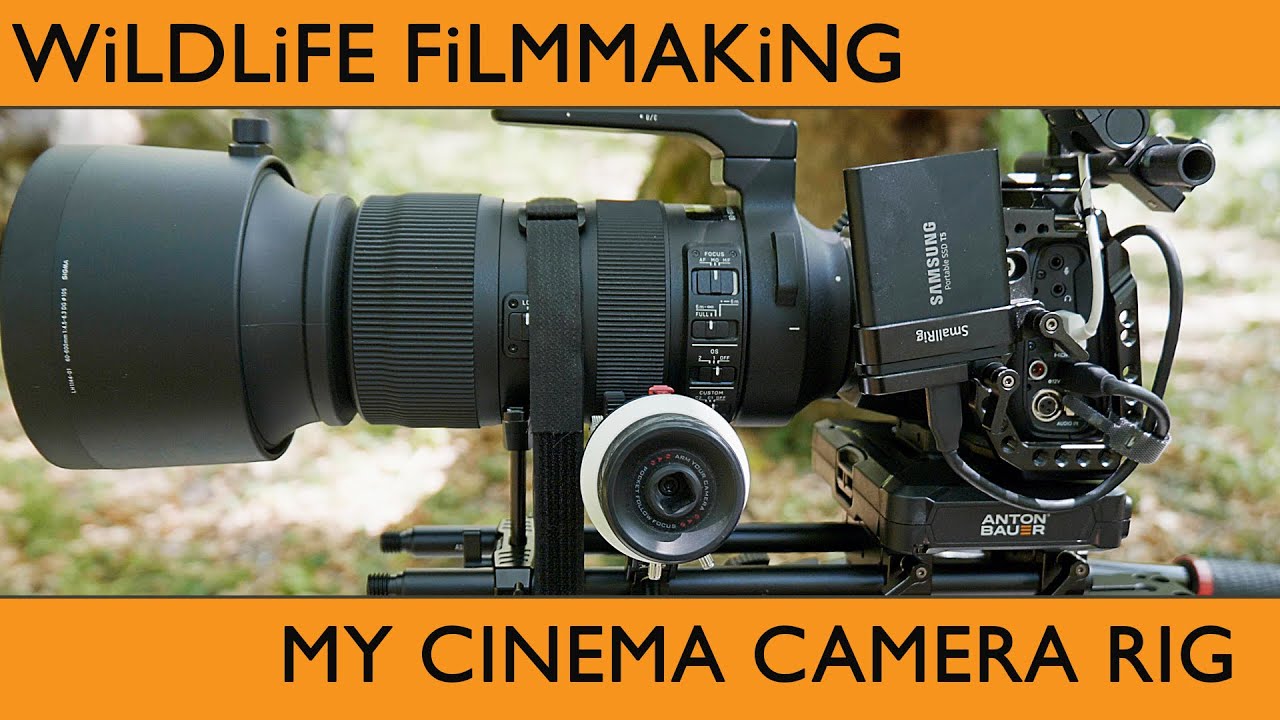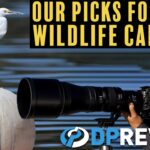Key Takeaways
-
Wildlife filmmaking requires cameras that can handle the unpredictable elements of nature and deliver high-quality footage.
-
Compact cameras like the Canon EOS C70 offer portability and cinematic quality for solo filmmakers.
-
Telephoto and wide-angle lenses are essential for capturing the intricacies of wildlife in their natural habitats.
-
Durability and weatherproofing are non-negotiable features for cameras that will be exposed to the elements.
-
Audio quality is just as important as visual quality in wildlife filmmaking, requiring directional microphones and wireless systems.
Capturing the Wild: Cameras Wildlife Filmmakers Swear By
When venturing into the wild to capture the untamed beauty of nature, the right camera is your most trusted companion. Wildlife filmmakers need gear that not only withstands the elements but also brings distant creatures up close, renders colors beautifully, and operates quietly to avoid disturbing the natural behavior of wildlife.

“Sophie Darlington: filming wildlife …” from www.canon-europe.com and used with no modifications.
Features That Make a Camera Wildlife-Approved
What makes a camera ideal for wildlife filmmaking? First and foremost, it needs to be robust. You’re often filming in challenging conditions, and your camera has to take a bit of rough treatment. Weather sealing is a must; it’s the difference between capturing that once-in-a-lifetime storm rolling in over the savannah and packing up because of a few raindrops.
Next, consider the autofocus system. It needs to be quick and accurate. Animals won’t wait for you to fiddle with settings. The camera’s sensor size also matters, as larger sensors can gather more light, which is invaluable during dawn and dusk when wildlife is most active.
Finally, think about frame rate. High frame rates are essential for those slow-motion shots that can make wildlife footage truly spectacular. A camera that offers a range of 60fps (frames per second) or higher will give you that flexibility.
Compact Powerhouses for the Solo Filmmaker
Now, let’s talk about a real game-changer for the solo wildlife filmmaker – the Canon EOS C70. This compact powerhouse is a testament to how far camera technology has come. Its Super 35mm sensor offers stunning 4K footage, and the Dual Pixel CMOS AF provides reliable autofocus that is essential when tracking moving subjects.
The EOS C70 is also designed for filmmakers on the move. Its lightweight body won’t weigh you down as you trek through forests or climb mountains to get the perfect shot. And most importantly, the image quality doesn’t suffer for the sake of portability – it’s a camera that punches well above its weight.
High-End Options for Cinematic Quality
For those looking to produce cinematic-quality films, high-end cameras like the ARRI ALEXA Mini and RED Digital Cinema line-up are the go-tos. They offer incredible resolution, color fidelity, and dynamic range, which can make the difference between a good wildlife film and a great one.
These cameras are an investment, but they’re built to last and designed to capture footage that stands the test of time. Their rugged builds can withstand the rigors of wildlife filmmaking, ensuring that your focus stays on the subject, not on protecting your gear.
Cost-Effective Cameras for Beginners
Starting out in wildlife filmmaking doesn’t mean you have to break the bank. There are cost-effective options that still offer the features you need. Cameras like the Panasonic LUMIX GH5 or the Sony Alpha series are excellent starting points. They offer 4K video, good low-light performance, and are compatible with a wide range of lenses.
Remember, the best camera is the one that you can afford and will use. It’s about the story you tell and the passion you put into your work that will resonate with your audience.
But let’s not forget about durability. Whether you’re shooting in the sweltering heat of the Sahara or the frigid tundra of the Arctic, your camera must be as resilient as you are. It’s not just about weatherproofing; it’s about a rugged build that can take a tumble and keep filming. Brands like Nikon and Canon are renowned for their sturdy camera bodies that can endure the bumps and bruises of the wild.
Rugged Build: Cameras That Can Take a Beating
Imagine you’re in the field, and your camera takes a fall. It’s a heart-stopping moment, but with the right camera, it’s not the end of the world. Take the Nikon D850, for instance. Its magnesium alloy body is both lightweight and incredibly durable. This camera can take a beating and still deliver exceptional image quality.

“Professional Wildlife Video Camera …” from m.youtube.com and used with no modifications.
“Best Video Camera For Wildlife and …” from acousticnature.com and used with no modifications.
On the Move: Portability for Filmmakers
Moving through dense forests or scaling mountains requires agility, and your camera should enhance your mobility, not hinder it. That’s where the concept of portability becomes key. A camera that’s too heavy or cumbersome can mean missed opportunities in the field.
Lightweight Cameras for the Roaming Filmmaker
The Sony Alpha 7 series, for example, offers a fantastic balance between portability and performance. These mirrorless cameras are known for their compact size and low weight, making them a favorite among wildlife filmmakers who need to pack light. Plus, the high-resolution sensors ensure that you’re not sacrificing quality for convenience.
When considering the weight of your gear, think about the lenses and accessories you’ll need to carry as well. Every ounce matters when you’re on the move, and choosing a camera system with a range of lightweight lenses can make all the difference.
Camera Support Gear: Keeping Shots Steady on Uneven Terrain
Support gear is just as important as the camera itself. A sturdy tripod is essential, especially for long waits when you’re staking out wildlife. But in uneven terrain, a traditional tripod might not cut it. That’s where specialized gear like the Manfrotto BeFree Live comes in – it’s designed for quick setup and stability on any surface.
Gimbals are also invaluable for keeping your shots steady while moving. The DJI Ronin-S is a popular choice, offering smooth footage even when you’re trekking through challenging environments.
Seeing in the Dark: Low Light Capabilities for Night Shoots
Wildlife doesn’t clock out when the sun goes down, and neither should your camera. Low light capabilities are critical for capturing the nocturnal habits of the animal kingdom. A camera with a high ISO range and a noise reduction system will help you film in the dark without sacrificing image quality.
Sensors and Settings for Twilight Encounters
The Canon EOS-1D X Mark III shines in low light conditions. Its full-frame sensor allows for incredible ISO sensitivity, enabling you to capture clear, detailed footage well after sunset. But it’s not just about the sensor; customizable settings like noise reduction profiles and autofocus sensitivity make a world of difference in the dark.
-
High ISO range for capturing clear images in low light.
-
Noise reduction features to maintain image quality.
-
Customizable settings to adapt to changing light conditions.
Remember, when shooting at night, a little extra light can go a long way. LED light panels that offer adjustable brightness and color temperature can help illuminate your subject without startling them.
IR and Thermal Cameras: Unlocking the Nocturnal World
For the ultimate night vision, infrared (IR) and thermal cameras open up a new world of wildlife filmmaking. These cameras can capture the heat signatures of animals, allowing you to film them in complete darkness. The FLIR Scout series is a great example, turning the night into day for your lens.
Sound of the Wild: Audio Equipment for Wildlife Films
Great visuals are only half the story in wildlife filmmaking; immersive audio brings your audience into the heart of the wild. Directional microphones are essential for picking up the subtle sounds of nature without interference from surrounding noise.
Shotgun Mics: Pinpointing Nature’s Whispers
The Rode VideoMic Pro+ is a solid choice for wildlife filmmakers. Its super-cardioid pattern focuses on the sound in front of the camera, minimizing background noise. This kind of directional audio fidelity is crucial when you’re trying to capture the soft footsteps of a lynx or the distant call of a loon.
Wireless Systems: Capturing Sound Without the Constraints
-
Sennheiser EW 112P G4 for reliable, high-quality audio transmission.
-
Rode Wireless GO for a compact, budget-friendly option.
-
Zoom H5 Handy Recorder for versatile, high-fidelity sound capture.
Wireless microphone systems like the Sennheiser EW 112P G4 provide the freedom to place microphones closer to the sound source without being tethered to your camera. This is particularly useful when filming skittish animals that might be scared off by your presence.
Editing for Impact: Post-Production Tools
Once you’ve captured the wild’s essence on camera, it’s time to bring it all together in post-production. The right editing software will help you weave your footage into a compelling narrative that transports viewers into the heart of nature.
Software Selection: Assembling Your Story
Adobe Premiere Pro is a favorite among wildlife filmmakers for its robust features and compatibility with other Adobe applications. For Mac users, Final Cut Pro X offers a seamless editing experience with powerful tools tailored for professional use. And for those starting out, DaVinci Resolve has a free version that’s surprisingly comprehensive.
Editing is more than just cutting and joining clips; it’s about pacing, storytelling, and adding those subtle touches that give your film its unique voice. Your choice of software should empower you to bring your vision to life, with user-friendly interfaces and a wealth of tutorials available to help you master the craft.
Most importantly, don’t forget about the importance of a reliable backup system. External hard drives and cloud storage solutions will ensure that your precious footage is safe from unexpected data loss.
Color Grading: Emphasizing the Mood of the Wild
Color grading is the secret sauce that can transform your footage from good to breathtaking. It’s about setting the mood, enhancing the natural beauty of the landscape, and making sure your wildlife subjects stand out. Adobe Premiere Pro and DaVinci Resolve both offer advanced color grading tools that can help you achieve that cinematic look.
FAQs
With the right camera and gear, anyone can embark on the journey of wildlife filmmaking. But you might have some questions before you start. Let’s tackle a few common ones.
What basic camera features are necessary for wildlife filmmaking?
To start, you’ll need a camera that can shoot in high definition, preferably 4K, to capture the fine details of wildlife. Look for one with a sturdy build, weatherproofing, and a good autofocus system. A high frame rate for slow-motion and good low-light performance are also key features to consider. For more insights, check out this review of the Sony A7S III, a camera praised for its exceptional low-light capabilities.
Can I use a regular DSLR for wildlife filmmaking?
Yes, you can use a regular DSLR for wildlife filmmaking, especially if it offers video recording in HD or 4K. Many DSLRs also have the advantage of interchangeable lenses, allowing you to adapt to different shooting scenarios in the wild.
However, mirrorless cameras are becoming increasingly popular for their compact size and silent operation, which can be beneficial when trying not to disturb the wildlife.
Do I need professional-grade cameras to start with wildlife filmmaking?
No, you don’t need professional-grade cameras to start. Many entry-level cameras offer the features necessary for wildlife filmmaking. What’s most important is learning to use your camera to its fullest potential and understanding the basics of composition, lighting, and storytelling.
Are there specific brands that dominate the wildlife filmmaking industry?
Canon and Sony are among the top brands favored by wildlife filmmakers due to their high-quality cameras and wide range of lenses. Nikon and Panasonic also have strong offerings that are used by professionals and enthusiasts alike.
Ultimately, the brand matters less than finding a camera that fits your specific needs, whether it’s portability, image quality, or lens compatibility.
How important is audio in wildlife filmmaking?
Audio is incredibly important in wildlife filmmaking. It adds depth and realism to your films, allowing viewers to not only see but also hear the environment. High-quality directional microphones and wireless systems are crucial for capturing the subtle sounds of nature.
-
Directional microphones like the Rode VideoMic Pro+ focus on the sound in front of the camera.
-
Wireless systems like the Sennheiser EW 112P G4 offer flexibility in microphone placement.
-
Audio recorders like the Zoom H5 provide high-fidelity sound capture, essential for post-production.
In conclusion, whether you’re a seasoned pro or just starting out, the world of wildlife filmmaking is accessible to anyone with a passion for nature and storytelling. With the right camera, lenses, audio equipment, and editing tools, you can create films that not only showcase the beauty of wildlife but also inspire others to appreciate and protect the natural world. So, grab your gear, head into the wild, and start filming—adventure awaits!




